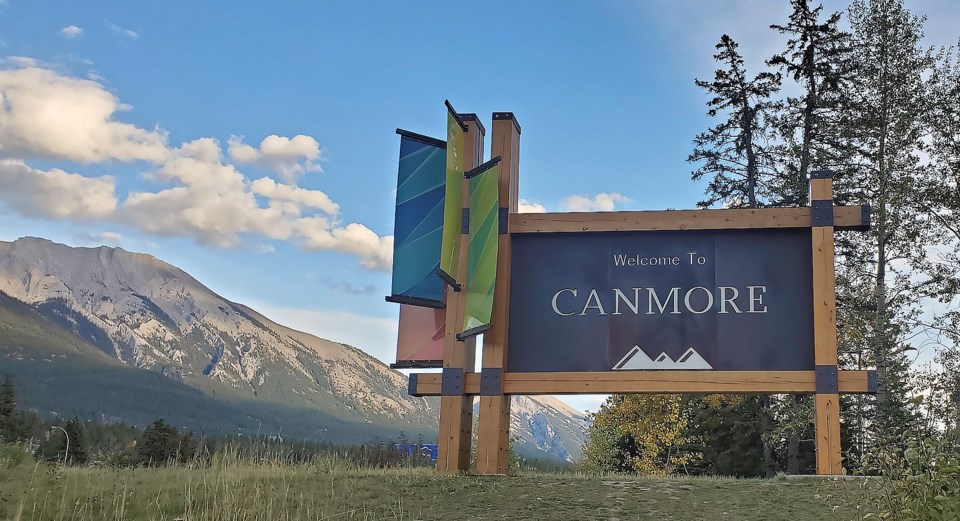CANMORE – Two weeks on the job and the new Canmore council is making its way through the lengthy process to finalize the Town’s operating and capital budgets for 2022.
The budget talks began with the preliminary work showing a proposed municipal operating budget of $61.2 million for an increase of about $3.4 million from last year.
Municipalities in Alberta aren’t permitted to run a deficit, per the Municipal Government Act, meaning all expenses have to be covered.
“It’s really about math,” said Therese Rogers, the general manager of corporate services. “How much does it cost us, what’s the budget piece, how much do we get from other sources and what’s left is what we need to collect from taxes?”
The anticipated revenue needed to be collected is about $33.1 million, while the remainder comes from other sources such as government grants, recreation sales and rentals and fees.
Though sizeable, Rogers highlighted the municipality collects taxes both for the Town of Canmore and the province. For 2021, the Town will take in $22.3 million for education taxes, which is more than 40 per cent of the money collected.
For every dollar collected, $0.53 is for municipal use, $0.44 goes to the province for education and $0.03 is reserved for the requisition to help seniors housing.
There are 11,975 taxable parcels of land, according to Town records. It has a combined taxable assessment of $8.1 billion. Residential properties make up the bulk of the land at 9,745 and there are 2,230 commercial and industrial properties.
The assessment split is 85 per cent residential and 15 per cent for non-residential. However, the tax split is 65 per cent residential and 35 per cent non-residential.
Lisa de Soto, the Town’s CAO, noted the aim is to have the split at about 60/40 after the former property tax task force recommended the change. The tax burden was shifted between 2013-15 to where it is now, de Soto said.
She added the difference in the amount of taxes that have had to be collected. In 2012, the Town received $17.74 million and by 2021, it was $26.39 million for a 49 per cent growth.
A common misconception is that the more businesses you have, the more tax revenue you can generate.
However, Mayor Sean Krausert highlighted that because of the split, a jump in the number of businesses paying taxes would benefit existing commercial or industrial enterprises more than residential taxpayers.
“If you bring in more businesses, it’s actually going to spread the amount requested from non-residential around more, so the non-residential taxes will go down,” Krausert pointed out. “This is to make it more fair to our competitors and our neighbours, so we’re a good place to do business and be fair to our residents.”
Further hampering municipalities is the switch from Alberta’s Municipal Sustainability Initiative (MSI) to the Local Government Fiscal Framework.
The changeover comes with a reduced funding level of 25 per cent, which will lead to tough questions for municipalities when it comes to paying for capital projects.
In Canmore, the MSI has played a pivotal funding role in key projects such as Elevation Place, artsPlace, the gymnastics centre and connecting the Legacy Trail just outside of Canmore. Without the money, the burden would have been shifted to local taxpayers or the projects would likely not have gone ahead.
“Those are keystone elements of what I think make Canmore special or some of the elements that make a good quality of living like Elevation Place, artsPlace, transit, Legacy Trail,” Krausert said. “I think those are very valued by the citizenry. We can’t just be getting into a discussion on pure numbers without recognizing what those numbers represent.”
de Soto said from 2007-17, Canmore was earmarked about $53 million through the MSI, though it was brought down to about $40 million by the province.
The Town will also soon have to deal with a large increase in what it will pay for the RCMP detachment. The upcoming census will likely have Canmore having more than 15,000 permanent residents, meaning the split in policing costs between the Town and the province will change.
It currently has the Town pay 70 per cent and the province the remainder. When Canmore hits 15,000 residents, it’ll see a shift to paying 90 per cent of policing costs and the province getting the rest.
The federal government and the National Police Federation negotiated an increase in RCMP wages retroactive to 2017. When the bill comes in, it will mean Canmore will be on the hook for about $1 million.
The Town is joining the Federation of Canadian Municipalities push to have the federal government cover the retroactive pay rather than municipalities with RCMP detachments bear the burden.
The previous council gave direction to staff in the spring for any tax increase in 2022 to be capped at five per cent after the initial recommendation was a proposed budget increase of nine per cent.
Rogers said a one per cent tax increase or decrease is about $264,000.
The 2021 municipal operating budget was finalized at $57.8 million, which came with a 4.5 per cent increase from 2020.
Council will deliberate on the 2022 budget in the coming weeks.




